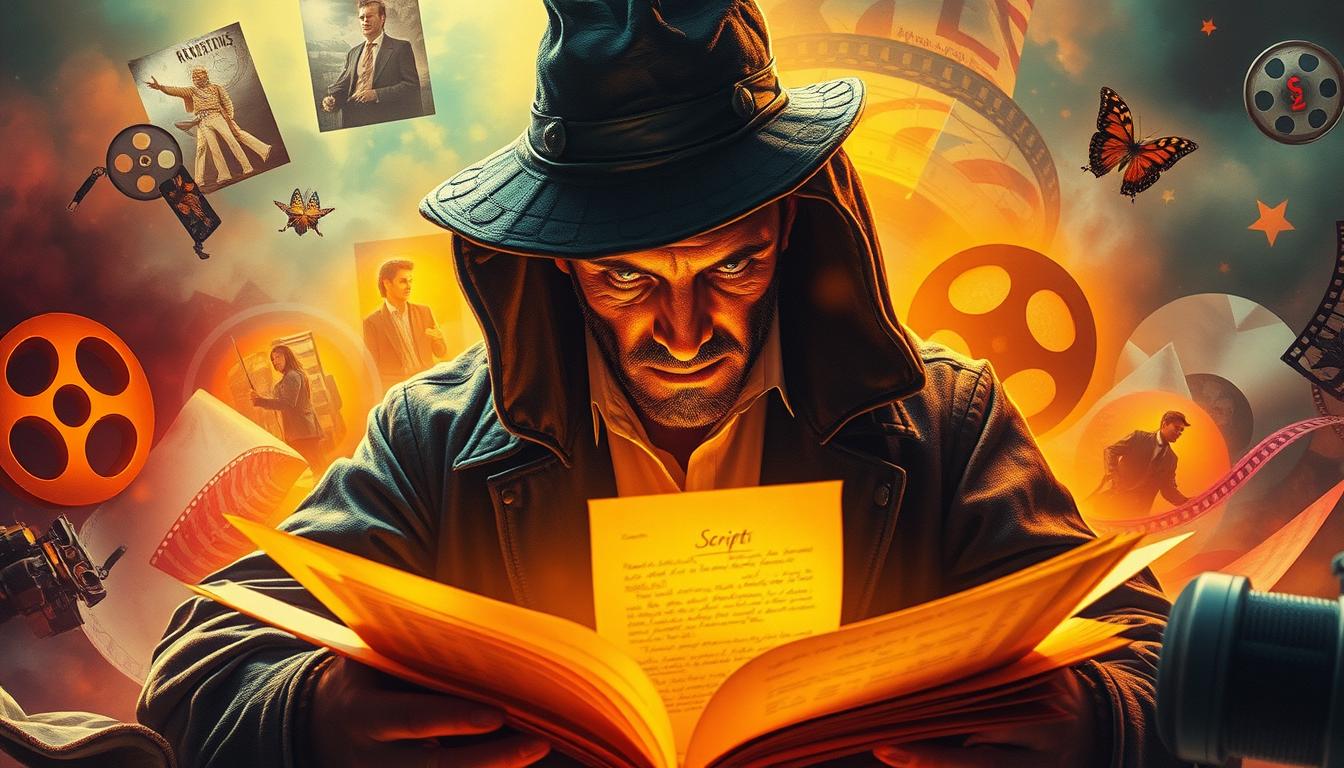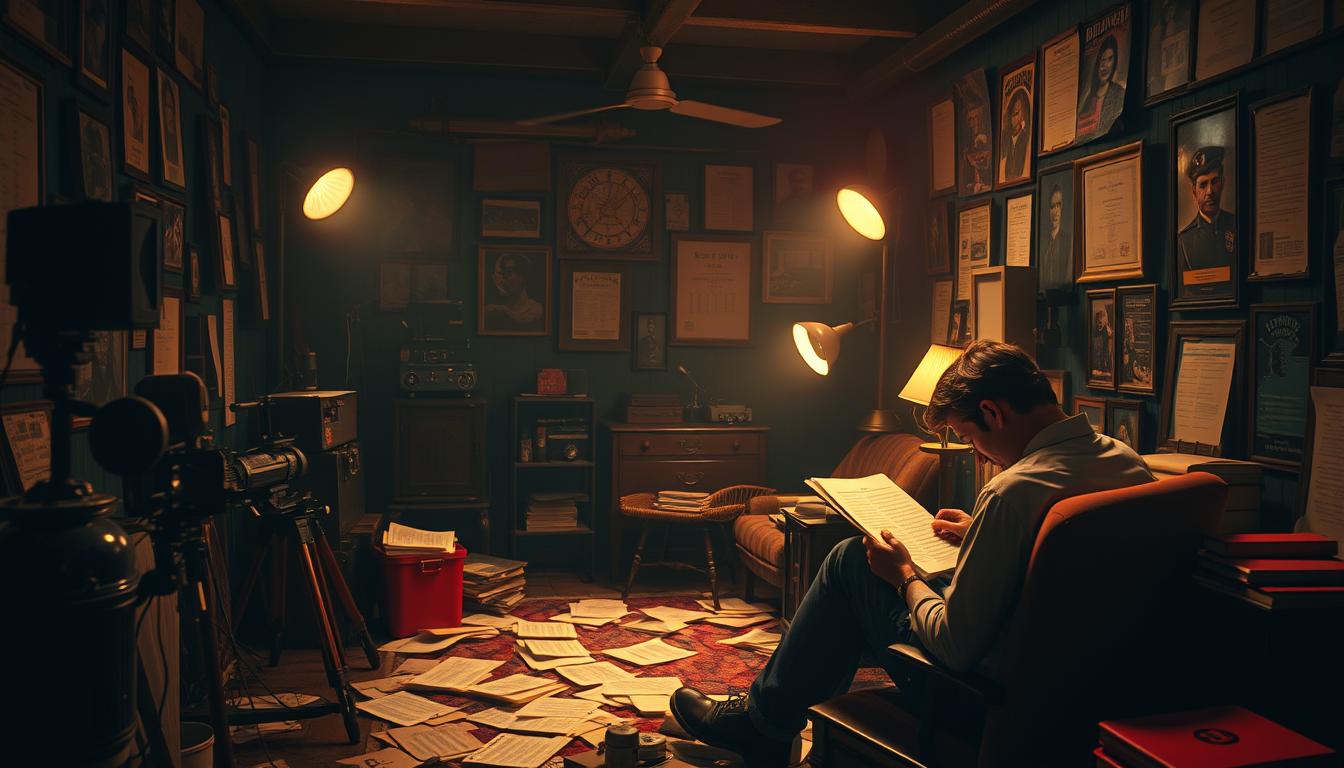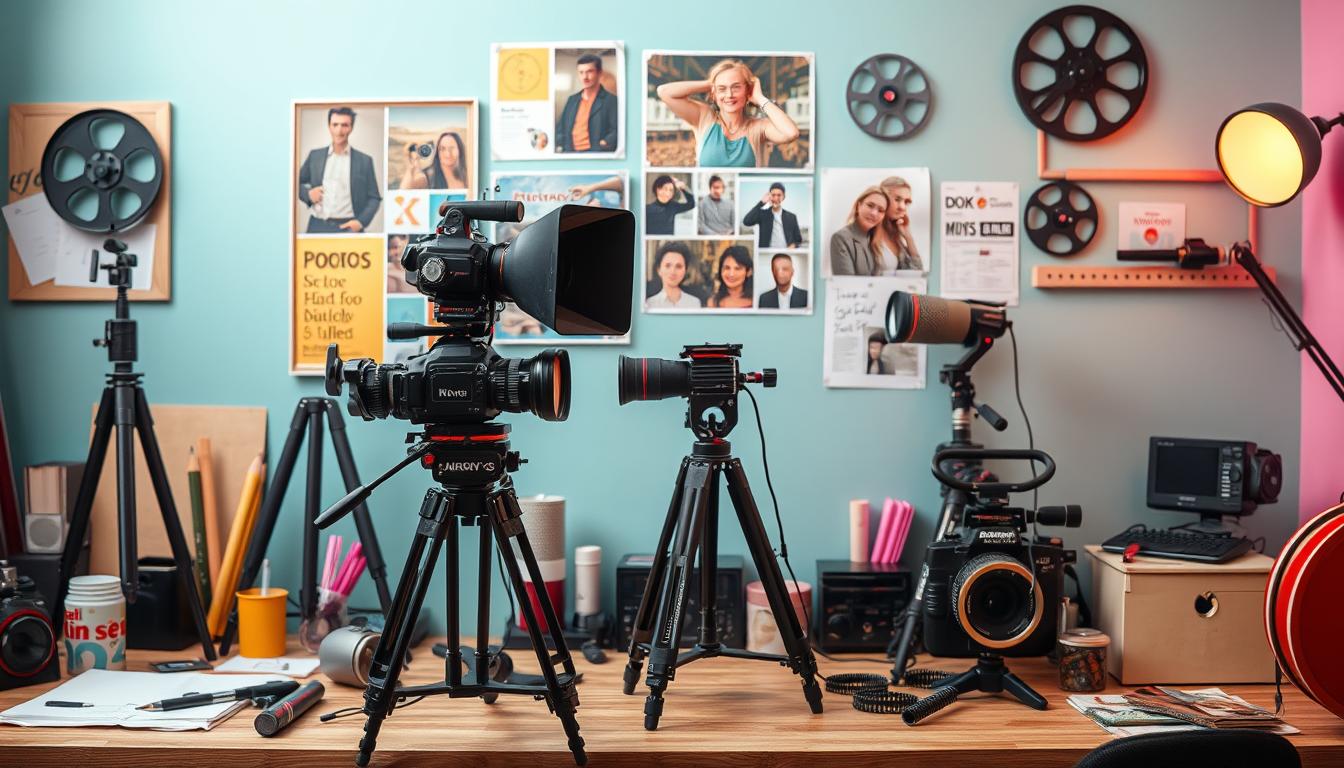- Home
- Screenwriting
- Essential Tips for Writing a Movie Script: A Beginner’s Guide

Essential Tips for Writing a Movie Eastern Promises: A Beginner’s Guide to Hollywood Stenciling
Decoding the Scriptwriting Puzzle: Where Do I Start?
Imagine this: you, basked in the neon glow of your vintage typewriter, endlessly clacking away to the eventual sound of Hollywood’s applause. Sounds dreamy? Well, it begins here—with writing a movie script, a rollercoaster ride of narrative twists and climactic turns. Let’s prepare you to embark on this screenplay spree by making sure you know a plot from a subplot and why every character should probably avoid walking into dark alleys late at night (unless it’s that kind of movie).
Building Your Blockbuster Foundations: What’s in a Movie Script Anyway?
Before you start dreaming about your Oscars acceptance speech, let’s dismantle the dynamics of a typical movie script. Expect a cauldron of structure, characters, and dialogue, all brewing to serve up a lip-smacking pot of cinematic chowder. Here’s the scoop—structure is your best friend. It’s the backbone, the frame, and occasionally the wrecking ball. Character development is the soul, while dialogue is the heart; it beats to bring your characters to life (or sends them to the script grave, depending on your narrative choices).
Let the Script-Writing Saga Begin!
With the wisdom of what a script really requires tucked under your arm like a trusty screenplay sword, you’re almost set to conquer the daunting white of the blank page. Chart the course of your cinematic quest from the comfort of your desk (snacks encouraged) and let’s create movie magic that even CGI can’t replicate!
Understanding the Basics of Writing a Movie Forget what you learned in English class about writing that perfect five-paragraph essay; writing a movie script is a whole new ball game with its own set of rules, curveballs, and home-run opportunities. So, strap in, grab your popcorn, and let’s dive into the technicolor world of scriptwriting where every line counts and every character matters more than a cameo.
Introduction to the Scriptwriting Process
Think of scriptwriting as the art of crafting dreams into dialogue and drama—it’s where you, the writer, get to play God (or at least director) for the world you create. Your words are going to leave the page, take on flesh, and speak. Yes, those doodles in your notebook could potentially be the next big blockbuster. The process starts with a spark, an idea that refuses to leave the cozy corners of your cerebrum, begging to be put on paper. From there, it morphs into a full-blown screenplay through a mishmash of creativity, coffee, and probably a few cries for help.
Key Components of a Movie Script: Structure, Characters, and Dialogue
Every scriptwriter needs to wield three essential weapons in their arsenal: Structure, Characters, and Dialogue. Let’s break it down:
- Structure: This is your story’s backbone—without it, your script flops like a fish out of water. Structure is what holds your story together and keeps the audience from dozing off. Think of it in three acts: the setup, the confrontation, and the resolution. Get these right, and you’ll have a script that moves smoother than a con artist at a high school reunion.
- Characters: Here’s where the magic happens. Characters are the heart and soul of your script. They’re like real people just with better dialogue and more dramatic lives. It’s your job to flesh them out, give them quiries, flaws, a wicked sense of humor, or a heart of gold. Make them memorable, make them loud, make them something new; just don’t make them boring.
- Dialogue: Dialogue is the dress to your character’s body; it needs to fit perfectly, highlighting all the right attributes. It’s what characters use to communicate, and if done right, it can be as iconic as the I’ll be back and as memorable as Frankly, my dear, I don’t give a darn! Good dialogue is like a good spice—it enhances what’s already there without overwhelming the main flavor.
Importance of a Well-Structured Plot and Character Development in Scriptwriting
Now, let’s talk turkey. A well-structured plot is like a treasure map. It guides the audience through twists and turns, peaks and pitfalls, all the way to the gold, aka the climactic resolution. If the structure’s off, viewers might as well be reading a map upside down, which leads to no treasure but a lot of frustration. And let’s not forget about character development—because watching a movie where the characters are as flat as soda left out overnight is a cinematic crime. Characters need to evolve, face conflicts, and show some chutzpah; it’s their story, after all, make it worth telling!
Remember, writing a movie script isn’t a sprint; it’s more like a marathon with hurdles. But with a pinch of persistence and a dash of your unique sparkle, you’re already on your way to that glowing screen. So, keep those creative juices flowing, keep the dialogue snappy, and let your characters jump off the page. Hollywood isn’t ready for what you’re cooking up!
Step-by-Step Guide to Writing Your First Movie Script
How to Begin: Concept Development and Logline Creation
Alright, brave screenwriter, let’s dive into the whirlpool of creativity known as writing a movie script! Before you can shoot for the stars, you’ve got to grab onto a galaxy — that’s your script concept. Start by brainstorming. Anything goes! Alien invasions, love stories on Mars, psychological thrillers in suburban basements — the universe is your oyster. Once you’ve latched onto an idea that excites you more than a free refill at the cinema, it’s time to distill this concept into a single, shiny pearl: the logline.
A logline is like a movie trailer in one or two sentences. It should woo producers, intrigue actors, and not bore your friends. Keep it tight, tantalizing, and tell us why your story is unique. Think of it as the VIP pass that gets your script through the doors of Hollywood’s hottest clubs. Not an actual pass, mind you, but wouldn’t that be nice?
Tips on Outlining Your Story and Developing a Screenplay Format
With your golden logline in hand, it’s time to build the bones of your beast — the outline. Some might prefer to jump straight into the script, but that’s like skydiving without a parachute. Fun metaphorically, disastrous literally. A solid outline will save you from plummeting through plot holes and character inconsistencies. Outline each act, break them down into sequences, and sketch out major scenes. Remember, a bit of planning now can save a screenplay later!
Once your outline is robust, translating it into a screenplay format is next. This isn’t the wild west; there are rules! Slug lines, action blocks, character cues — each element has its place. Software can be your best friend here, with tools like Final Draft or Celtx helping keep your script from looking like a toddler’s attempt at a novel. Remember, format matters because nobody likes a jumbled jigsaw puzzle.
Techniques for Writing Compelling Dialogues and Dynamic Characters
Now for the sparkle and pop — dialogue and characters. Writing dialogue that crackles and characters that feel like next-door neighbors (or that one weird uncle) isn’t easy, but fear not! For dialogue, listen to how people talk: it’s messy, funny, poignant, and sometimes a string of ums and ahs. Your characters shouldn’t sound like they swallowed a dictionary, unless, of course, that’s their thing. And please, no monologues about the meaning of life while buying milk. Keep it real.
As for characters, they are the beating heart of your screenplay. Develop backstories, even if you don’t use them. Know what makes them tick, their worst fears, and what they had for breakfast. It might not all make it into the script, but it’ll shape how they navigate your world. Make them flawed, make them fabulous, but above all, make them human. Unless they’re aliens, of course. Then just make them relatably non-human.
Embarking on the journey of writing a movie script is akin to setting off on a grand adventure. There will be monsters (writer’s block), mazes (plot twists), and possibly even dragons (deadlines). But with your logline as your compass, your outline as your map, and your characters and dialogues as your travel companions, you’re well-equipped for the quest. Charge forth, intrepid scriptwriter, and bring those cinematic dreams to life!
Common Pitfalls and How to Avoid Them While Writing a Movie Script
Buckle up, aspiring screenwriters! You’re about to embark on a journey where the path is paved with more traps than a booby-trapped temple in an action-adventure movie. When writing a movie script, numerous pitfalls await the unwary scribe. But fear not! With the right map, you can navigate these treacherous waters and sail into the sunset with a script that might just be the next big blockbuster.
Most Frequent Mistakes Made by Beginners in Scriptwriting
Let’s kick off with the biggies—the missteps that have tripped up many a novice screenwriter before you. One classic blunder is the “more is more” approach: cramming your script with too many characters, too many subplots, and dialogue denser than a black hole. Remember, simplicity is your friend! Your audience won’t need a PhD in plot analysis to understand your movie if you keep things clear and focused.
Next up is the notorious cardboard character. If your characters have the depth of a sheet of paper, you can’t expect your audience to care about their fates. These characters often spout dialogue that feels about as natural as an alien speaking Shakespeare. Make your characters real, and give them voices that resonate with authenticity.
Advice on Seeking Feedback and the Importance of Revisions
Ah, feedback—the spinach of the scriptwriting diet. It might not always taste great, but it can really pump up your writing muscles. Getting feedback is crucial, but here’s the catch: Not all feedback is created equal. Seek out those whose opinions will genuinely help refine your script. This might be a professional script consultant, a trusted filmmaker friend, or a screenwriting group member whose taste and judgment you respect. Just like in a well-crafted mystery, consider their feedback clues to help you solve the puzzle of making your script better.
Revisions are another critical step that many beginners skimp on. Think of your first draft as your raw clay—it’s not supposed to be perfect. It’s your job to sculpt, refine, and sometimes lop off entire chunks to reveal the beautiful statue within. Never be afraid to murder your darlings (a pithy phrase often attributed to William Faulkner), because sometimes a scene or a line you love doesn’t serve the larger story. Kill it and move on!
Resources and Tools That Can Assist Beginners in the Scriptwriting Process
Thankfully, the modern scriptwriter has access to an arsenal of tools that the likes of Shakespeare or even Tarantino didn’t have. Software like Final Draft or Celtx can take some of the grunt work out of formatting, so you can focus more on crafting compelling narratives and snappy dialogue. These tools also help with more mechanical aspects of writing a movie script, such as maintaining consistent margins, pagination, and timing cues—an easy mishap for any rookie.
Moreover, there’s no shortage of educational resources available. Books like Save The Cat by Blake Snyder and Story by Robert McKee are practically bibles in the industry. Websites like ScreenCraft or The Black List provide not only insights and tips but also opportunities to network and get your script in front of the eyes that matter. And let’s not forget the treasure trove of podcasts and YouTube channels dedicated to the art of screenwriting. From Scriptnotes to BAFTA Guru, these resources offer gold nugits of advice that can propel your script from the slush pile to the spotlight.
Remember, writing a movie script is a marathon, not a sprint (unless you’re penning Run Lola Run: The Sequel). Every writer stumbles and falls at some point. The key is to pick yourself up, dust off your typewriter (or, you know, laptop), and keep typing those scripts. With these tips and a healthy dose of perseverance, you might just write your way into the next opening night gala where your name is flickering on the big screen.
Roll Credits on Screenwriting Woes
Phew! If you’ve scampered through our mini-epic on writing a movie script, give yourself a well-deserved pat on the back. Or better yet, hire someone to clap dramatically every time you walk into a room. You’ve just armed yourself with the arsenal (fancy, huh?) to dodge every newbie screenwriter’s nightmares and possibly pen the next blockbuster. Or at least something your mom will brag about at family gatherings.
Polish Your Script ‘Til It Shines Like a Hollywood Star’s Teeth
Remember, writing a movie script isn’t a sprint; it’s more like a marathon, with snacks. Lots of snacks. Maybe a nap here and there. And just when you think you can’t look at your script anymore without starting a small bonfire, that’s when you need to dive in again. Edit, refine, and perhaps cry a little over your keyboard – it’s all part of the process.
Bring in the Reinforcements: Feedback Is Your New Best Friend
Lastly, don’t forget to unleash your freshly baked script onto a circle of trusted confidantes—those who love you enough to be brutally honest and those who are envious enough to nitpick. This blend of feedback could be the magic potion you need to sprinkle that final bit of fairy dust on your script. And voilà! You’re ready to pitch your heart out, secure funding, and watch as actors bring your words to life. Easy peasy lemon squeezy!
Armed with knowledge and an indomitable spirit, go forth. Write with passion, rewrite with more passion, and script your way to silver-screen glory. Oh, and don’t forget to thank us in your Oscar acceptance speech. No pressure!






